- Energy Storage & Decarbonization Pathways
- Grid Infrastructure
- Just Transition
- Tax Incentives & Appropriations
- Transmission & Power Markets
- Blog
ACORE Grid Forum Gathered Energy Leaders to Discuss Opportunities and Obstacles to Achieving a Fundamental Transformation of America’s Grid
On October 13, a diverse array of stakeholders gathered in Washington, D.C. at the ACORE Grid Forum to discuss the pathways, opportunities, and obstacles to a renewable energy future.

The Future is Bright
Although there are challenges, several speakers expressed optimism for the achievement of a decarbonized grid. Federal Energy Regulatory Commission (FERC) Chairman, Richard Glick, began the event by noting that despite the challenges of climate change and extreme weather, “the future is bright.”
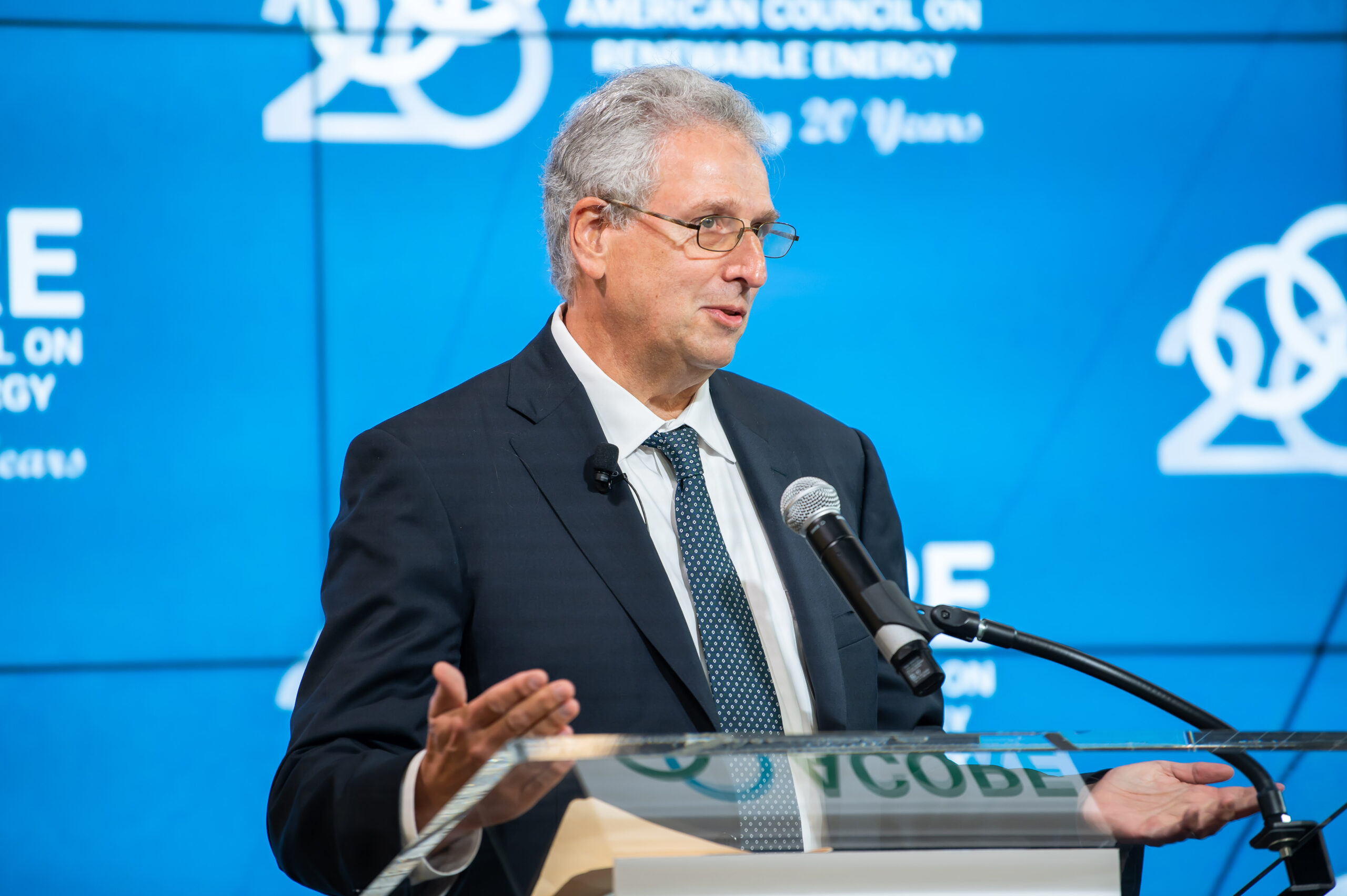
Customer demand is driving the development of clean energy, which was reflected in later panels by Brianne Miller of Microsoft and Xing Wang of Amazon Web Services (AWS) descriptions of their companies’ 100 percent renewable energy goals. As Glick and others noted, this high level of demand will be further accelerated by the Inflation Reduction Act.
Regarding his uncertain confirmation, the Chairman said his focus is on the important work at the Commission and that “whatever happens, happens.”
Alejandro Moreno, Acting Assistant Secretary of Energy for the Energy Efficiency and Renewable Energy Office (EERE) at the Department of Energy (DOE), presented the National Renewable Energy Laboratory’s 100% Clean Electricity by 2035 Study, which examined a range of future scenarios for achieving a net-zero power grid by 2035. Moreno noted that while new technologies will be needed to achieve a grid with 100 percent clean power, we can get to about 70 to 90 percent now, and in all scenarios, the benefits exceed the costs.
Uncle BIL and Uncle IRA
Quoting Energy Secretary Jennifer Granholm’s frequent saying that the goal is to “deploy, deploy, deploy,” Maria Robinson, Director of DOE’s new Grid Deployment Office (GDO), explained that DOE has added deployment to its historic research and development focus.
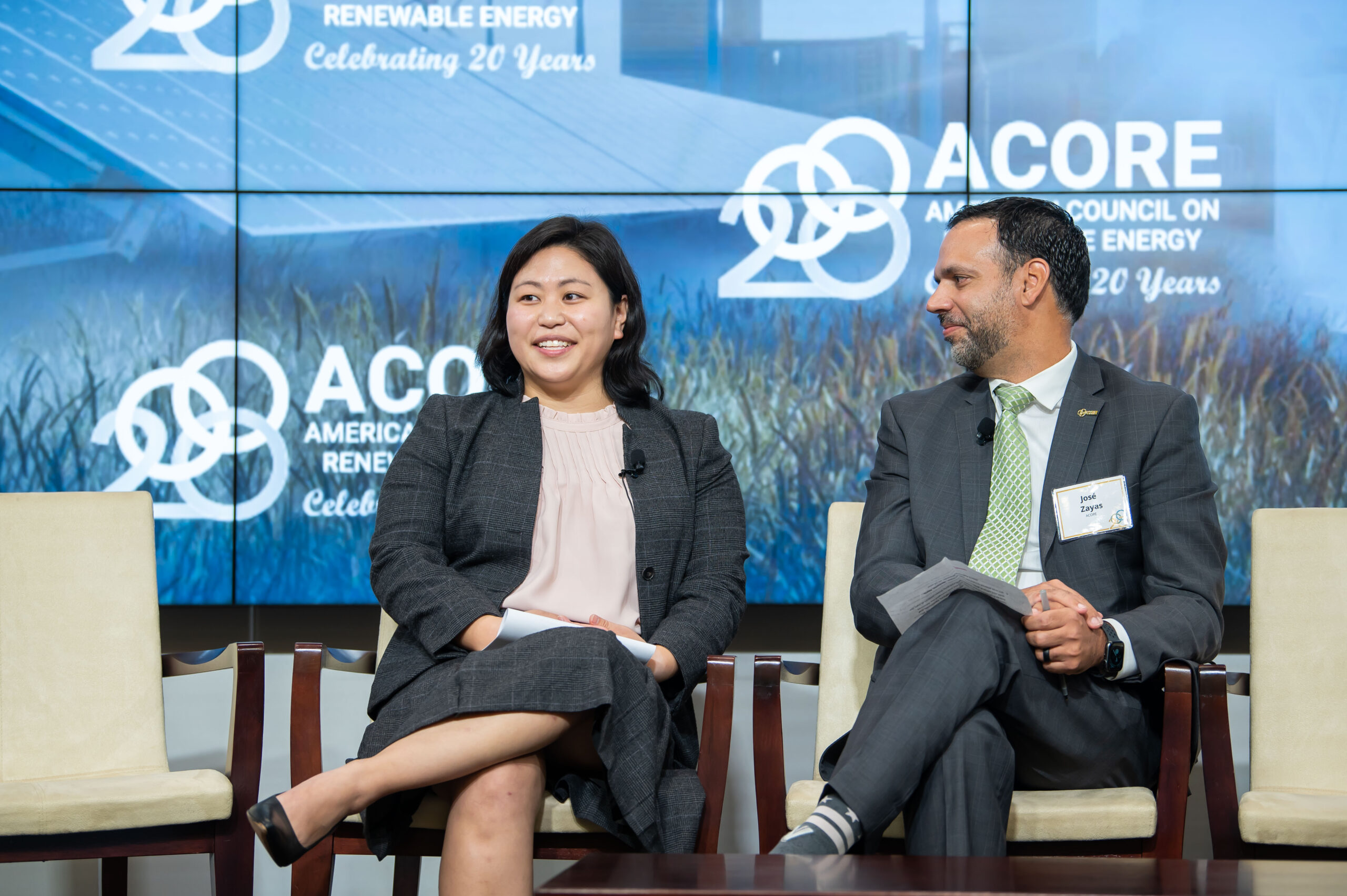
Robinson discussed the multiple transmission financing opportunities created by the Bipartisan Infrastructure Law (BIL) and Inflation Reduction Act (IRA) – known within GDO as Uncle BIL and Uncle IRA, noting that DOE is in the process of issuing requests for information and inviting proposals.
Robinson explained that we will need to invest in the full suite of technologies, including transmission expansion, grid modernization, distribution and distributed energy resources. She identified the development of domestic manufacturing as critical, commenting that supply chain concerns keep her up at night.
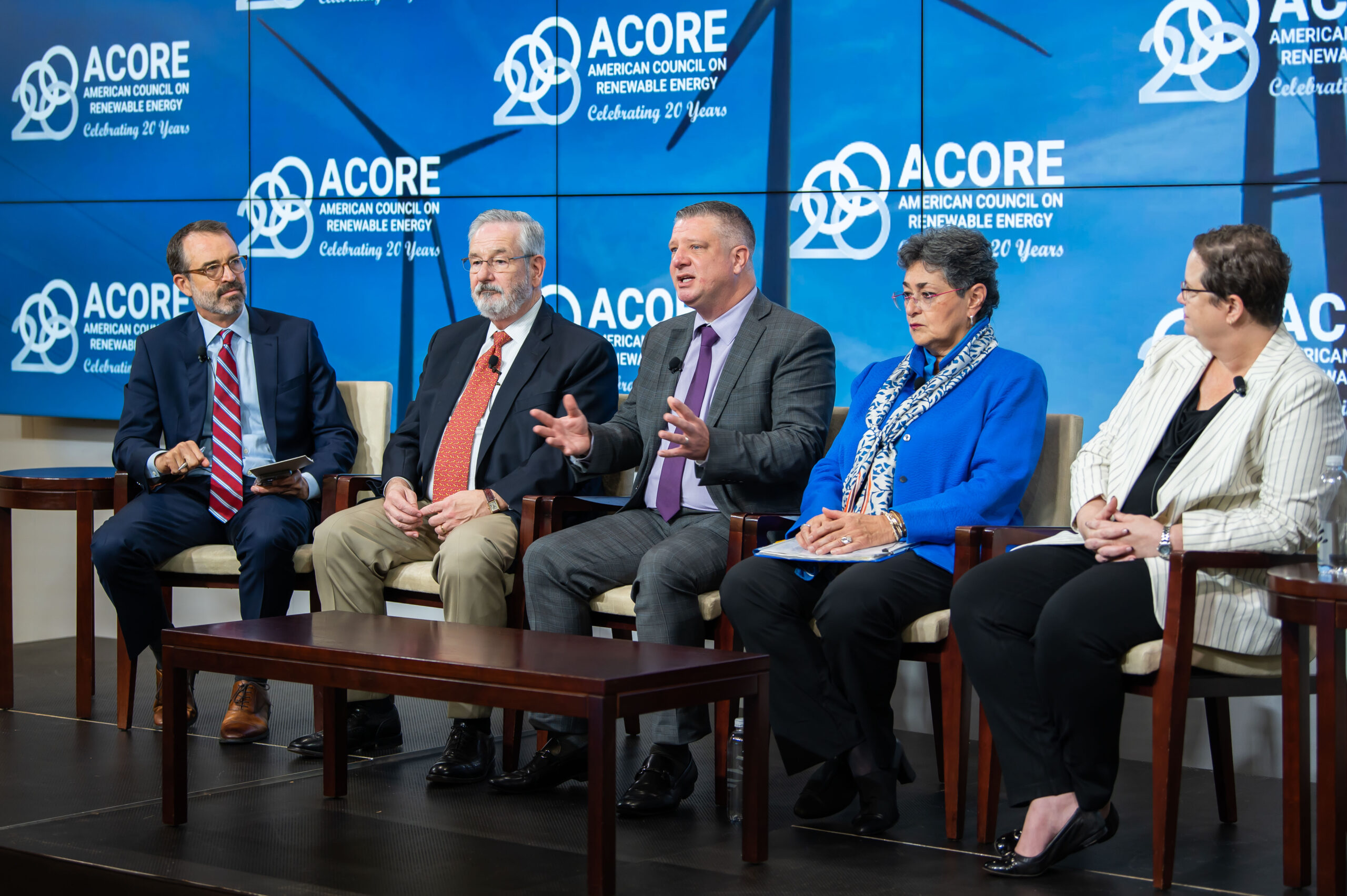
Renewable Energy and Reliability
Chairman Glick advised taking all steps to ensure reliability in a renewable-based grid, such as through storage and transmission infrastructure, and noted the unfortunate trend for renewable resources to be blamed for outages that occur during extreme weather, such as during Winter Storm Uri – which is still a topic of discussion at the Commission. Later, panelists affirmed that renewable resources were not the cause of the outages that occurred during that winter. Texas-based consultant Alison Silverstein and Mark Lauby, from the North American Electric Reliability Corporation (NERC), both agreed that the outages were due to challenges in the natural gas sector.
Actions must be taken, however, to improve grid operations with more renewable energy deployed. Jason MacDowell from GE Energy Consulting emphasized the need to understand the grid stability issues from the expansion of inverter-based resources and to identify where there is a need for more advanced capabilities. Lauby highlighted the importance of grid-forming technologies (such as those that maintain inverter-based resource control stability during challenging network conditions) and urged the industry to “start building them please.”
Another important step toward reliability is a fundamental rethinking of the resource adequacy paradigm and associated metrics. Jennifer Curran from the Midcontinent Independent System Operator (MISO) explained that the use of a “1-in-10” reliability standard (a probability of an outage of one day in 10 years) is outdated, and we need a new paradigm that reflects a longer timeframe. Lauby agreed, noting that formerly, capacity was king, but now “the king has no clothes.” Instead, the key focus is on energy and essential reliability services.
Grid United’s Michael Skelly stated that long-term models must be developed for a more uncertain future, which is very difficult to design but will improve with each iteration. Silverstein agreed, explaining that we understand how reliability modeling needs to change but do not yet have the tools to do that effectively.
The Three Ps of Transmission
The importance of interregional transmission for the achievement of a clean energy future was discussed throughout the day. Shashank Sane of Invenergy and many others emphasized the need for a Macro Grid. Alison Silverstein recommended a national transmission authority and noted that it is almost impossible to overbuild transmission since the result is always a net improvement.
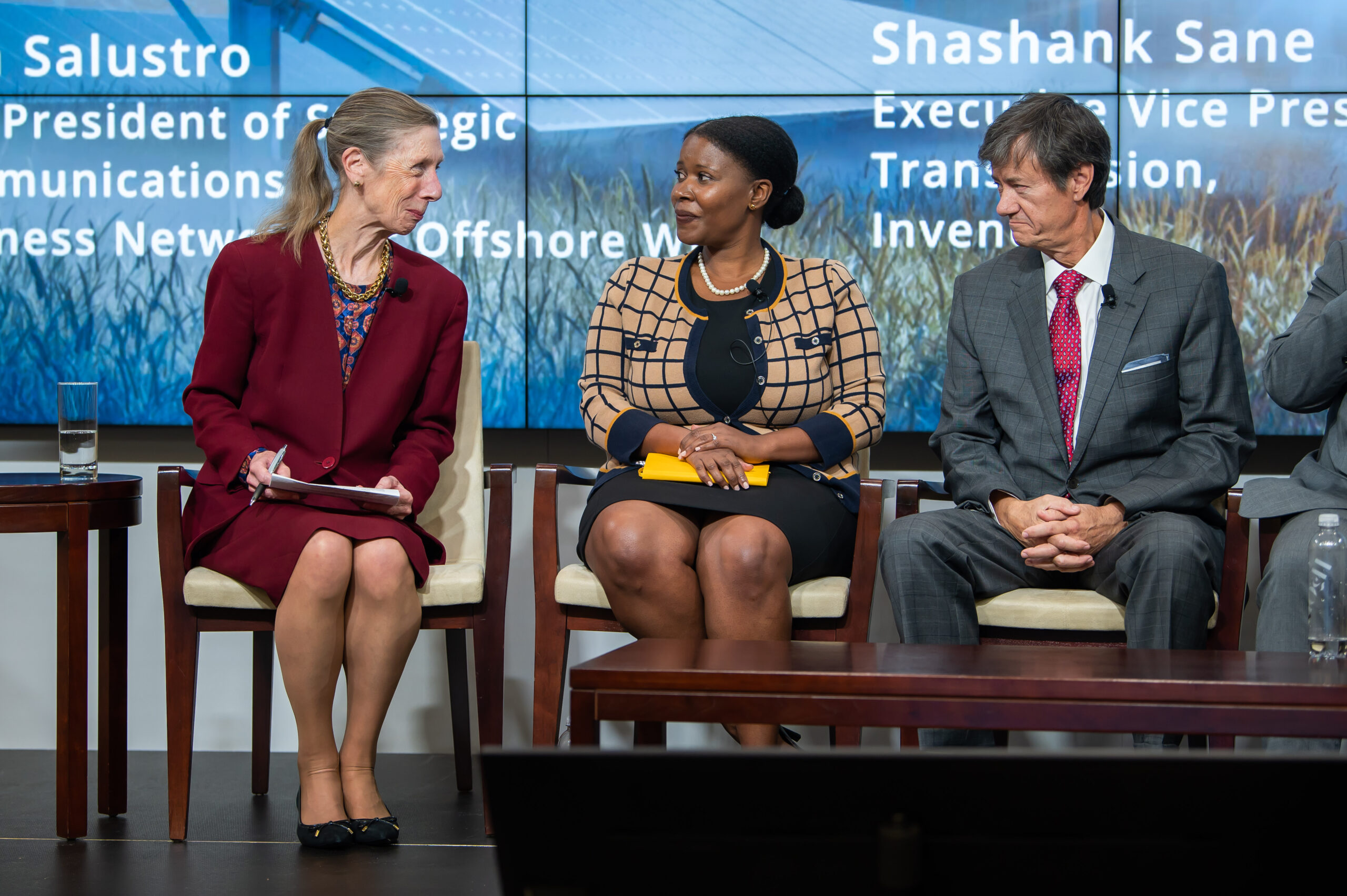
Advanced Power Alliance’s Steve Gaw stated that transmission planning must incorporate all three categories of transmission’s benefits – reliability, economics and public policy. MacDowell noted that spreading out the diversity of resources is a significant benefit of interregional transmission.
Beth Soholt of Clean Grid Alliance observed that with regard to the “three Ps” of transmission, progress had been made in planning, but we still have a long way to go in paying and permitting. Many panelists discussed the significant difficulties and delays resulting from the permitting of transmission.
Monique Dyers from Ensight Energy Consulting stated that permitting transmission can average 10 years, with local opposition being a significant barrier. It is difficult to communicate the benefits to communities where it is sited when the electricity is delivered to a different geographic area. Robinson also agreed that educating the public on transmission’s benefits is critical.
Dyers and Jennie Chen from World Resources Institute both recommended that transmission be planned along highways and existing rights-of-way where possible to minimize permitting delays.
With many panelists agreeing on the role of communication in transmission siting and permitting, Skelly emphasized the need to approach such an effort with humility.
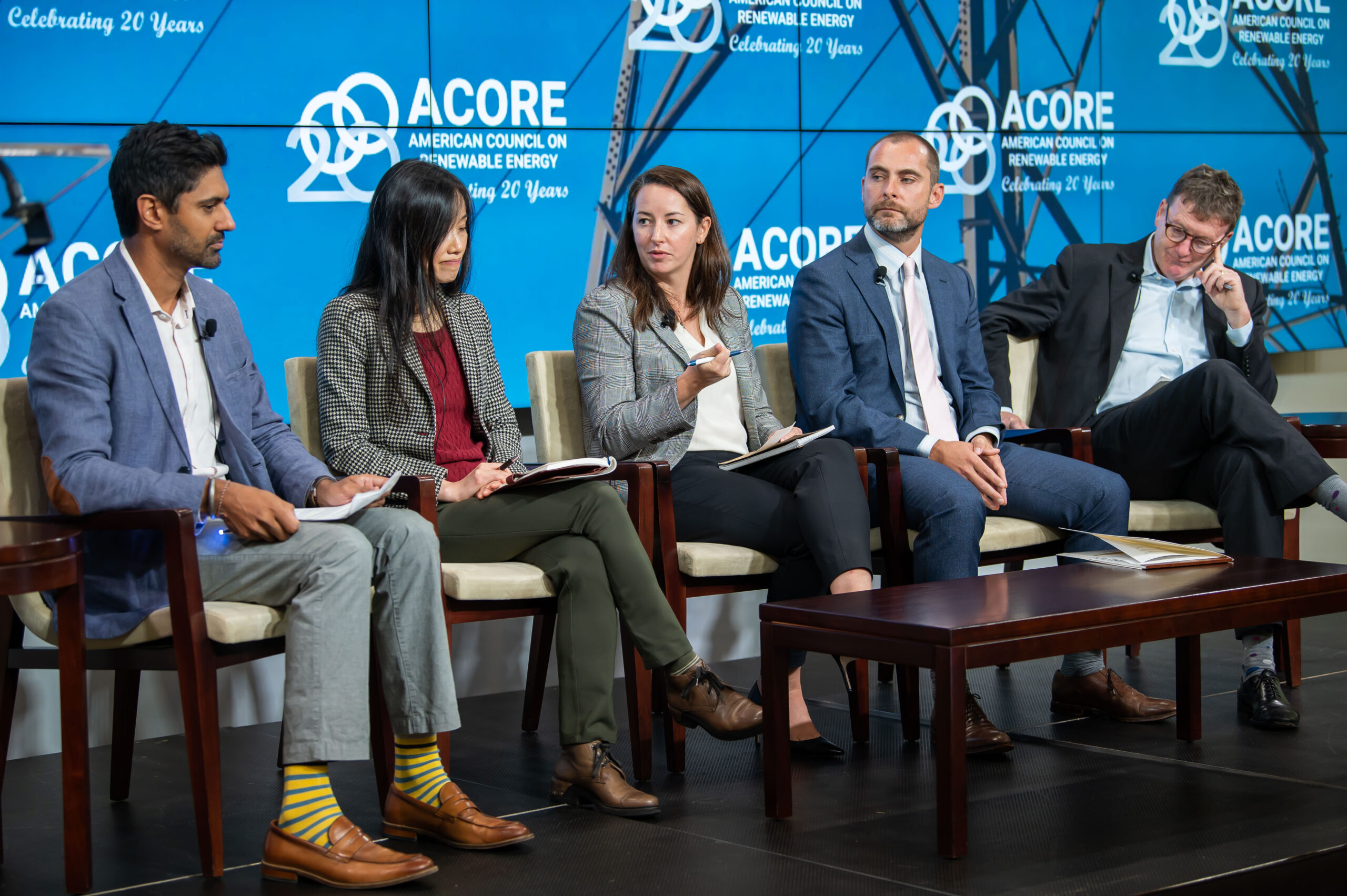
The Importance of Equity
Equity must also play a role in the siting of transmission. DOE’s Alejandro Moreno stressed that it is important for communities to support infrastructure and receive benefits, including jobs and economic growth. Chen recommended a redistribution of the “gains from trade” that result from transmission to communities.
To complement transmission development, Silverstein urged a focus on energy efficiency and demand response. She also explained how grid failures threaten to exacerbate historic socioeconomic disparities: most of the hundreds of people who lost their lives in Texas during Uri had low incomes and were living in homes without insulation or efficient appliances.
Maria Robinson stated that DOE takes the Justice40 Initiative very seriously, which aims to deliver at least 40 percent of the benefits of certain federal investments to disadvantaged communities, while avoiding adverse impacts to those communities.
Brianne Miller noted the partnership between Microsoft and Volt Energy as one step toward greater equity in clean energy development and siting.
Interconnection Improvements
With the ACORE Grid Forum held on the same day that over 100 parties filed comments on FERC’s proposed rulemaking to improve the interconnection process, a very timely discussion was held on interconnection queue reforms.

Xing Wang from AWS, David Kelley from the Southwest Power Pool (SPP) and NextEra’s Matt Pawlowski described an important initiative they are engaged in to improve the efficiency of the interconnection process through automation of the studies. Kelley explained that this initiative was undertaken when SPP had exhausted the improvements that could be achieved through interconnection process reforms. Through this effort, automation is being put in place for data entry and validation, which, as Kelley noted, will free up engineers’ time for more important work. Wang stated that artificial intelligence could also play a role in improving the study process, and Pawlowski observed that while SPP was the furthest along in such automation, their hope is that this could be adopted by other RTOs.
Pawlowski expressed support for FERC’s recent proposed rulemakings on transmission planning and interconnection, while noting that more work is needed. Kelley agreed but said the problem of ongoing restudies still needs to be addressed.
Electricity Market Reforms
While recognizing the critical role of transmission, many panelists also addressed the need for market reforms. Chairman Glick stated that the markets still need to catch up with renewable energy deployment and encouraged stakeholders to be involved in Regional Transmission Organization (RTO) proceedings where important decisions about market design are made.

Microsoft’s Miller agreed with the importance of removing barriers to clean energy participation in the markets, noting that Microsoft has released a policy brief on decarbonization of the grid. Renewable resources, storage and electric vehicles have an important role to play, and digitalization can improve the efficiency of these resources. Jennie Chen also emphasized the need for market improvements to optimize the charging and discharging of the growing fleet of electric vehicles that can be available as storage.
The final panel of the day also discussed the need for market reforms to better value and optimize storage. Ann Coultas from Enel North America underscored the challenges to storage participation in the markets as falling under the categories of products, volume, and pricing. Many of the ancillary services markets were designed for how a generating resource operates and are not the right products for storage.
Gabe Murtaugh of the California ISO explained that a key issue is optimizing the prices at which storage can buy and sell and recommended the consideration of a model where storage is paid a fixed amount to charge with a call option to discharge when needed. Nidhi Thakar of Form Energy, which has developed a multi-day storage technology, said that there is no market product that appropriately values long-duration storage.
Thakar stated that, unlike transmission, siting is not a significant barrier to storage unless it is part of a hybrid resource. Instead, the greatest need is for market improvements. Murtaugh acknowledged that all the RTOs are likely to be rethinking their market structures.
On behalf of the ACORE team, thank you to all who were able to attend the 2022 ACORE Grid Forum, especially our sponsors who helped make the event possible.
Join leaders from across the renewable energy sector.

What will our next 20 years look like? Here’s the truth: they’ll be better with ACORE at the forefront of energy policy.
Shannon Kellogg
Amazon Web Services (AWS)
